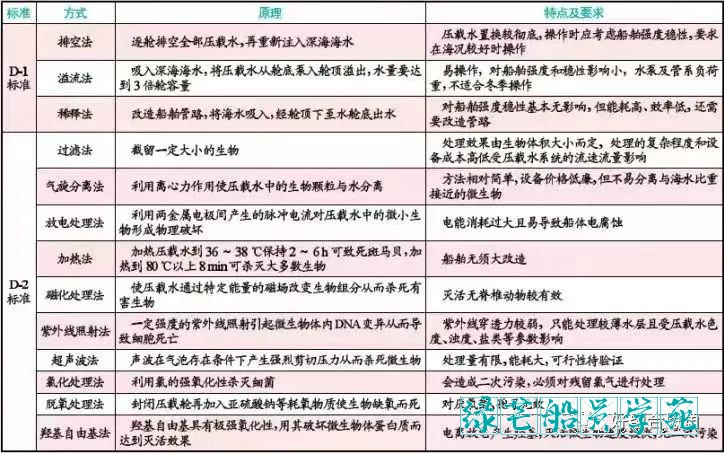浅谈加拿大压载水法规对《压载水报告表》提交的最新要求
第一、压载水规则
加拿大是一个高度发达的资本主义国家,得益于丰富的自然资源和高度发达的科技,使其成为世界上拥有最高生活水准、社会最富裕、经济最发达的国家之一。因对环境环保要求特别高,对海轮进港要求也相对比较严格,特别是防污这方面的要求,就从加拿大对海轮排放压载水的要求,来加拿大的海轮不仅要满足《国际压载水公约》还要执行本国特有的规定。我们可以参考以下加拿大对压载水新规则的更新中就可以看出本国对压载水要求在一步步的提高。
《THIS GUIDE》
This guide has been created to provideinformation on the Designated Areas to Exchange and Canadian freshwater portsreferred to in the proposed new Ballast Water Regulations which will bepublished in Canada Gazette 1 in June 2019.
《THE NEWREGULATIONS》
The Regulations are being changed toprotect Canadian waters from non-native species and bacteria. When a new organismarrives in an ecosystem, they can create damage that can’t be undone. Sometimesthese organisms arrive in Canada through ballast water, and damage our marineecosystems and economy.
The proposed new Ballast Water Regulationshave been created to keep vessels safe while reducing the chances that morenon-native species will arrive in Canada through ballast water. This guide is acompanion document to the proposed new Regulations. Existing statutory orregulatory requirements must be followed, and overrule any contradictoryinformation included in this guide.
《HISTORY OF BALLAST WATER REGULATIONS》
In 1982, the Department of Fisheries andOceans created Canada’s first ballast water restrictions to reduce the threatof toxic phytoplankton on local mussel farms. For more information about thedischarge requirements for the Iles-de-la-Madeleine archipelago, please seeCanadian Sailing Direction, ATL 108 - “Gulf of St. Lawrence (SouthwestPortion)”.
The first voluntary rules for ballast waterexchange were created in 1989, and there have been many updates since:
• In 1991, ballast exchange guidelines were created by theInternational Maritime Organization (IMO) – and were updated in 1997 asresolution A.868(20), Guidelines for the Control and Management of ShipsBallast Water to Minimize the Transfer of Harmful Aquatic Organisms andPathogens;
• In 1993 the U.S. Coast Guard created rules that required ballastexchange for vessels traveling within the Great Lakes Basin. These changed in2004 to make reporting mandatory, and again in 2005 to make ballast watermanagement mandatory in all U.S. waters;
• In 2000 the Canadian guidelines were expanded to cover all Canadianwaters and renamed to the Guidelines for the Control of Ballast Water Dischargefrom Ships in Waters under Canadian Jurisdiction;
• In 2002 the St. Lawrence Seaway Management Corporation and the St.Lawrence Seaway Development Corporation, updated their shared Practices andProcedures, to make following best practices a requirement for travelling throughthe Seaway system;
• In 2004 the International Maritime Organization (IMO) finalized theInternational Convention for the Control and Management of Ships’ Ballast Waterand Sediments, 2004 – this agreement created a standard for ballast watertreatment and called for the eventual phasing out of ballast water exchanges;
• In 2006, Canada’s Ballast Water Control and Management Regulationsare changed to reflect current U.S. and international rules, including theInternational Convention for the Control and Management of Ships’ Ballast Waterand Sediments, 2004;
• In 2010 Canada endorses the International Convention for theControl and Management of Ships’ Ballast Water and Sediments, 2004;
• In 2011 and 2017 administrative changes were made to the BallastWater Control and Management Regulations;
• In 2012, the U.S. Coast Guard creates a ballast discharge standardfor U.S. waters and an approval process for ballast water management systems;
came into force;
• In 2019, the proposed new Ballast Water Regulations, will helpCanada meet our obligations under the International Convention for the Controland Management of Ships’ Ballast Water and Sediments, 2004. The regulationswill also help protect Canadian waters from invasive species and will bepublished in June 2019 in Canada Gazette 1. To support the proposed changes tothe Regulation, the Canadian guidelines were updated and renamed “A Guide toCanada’s Ballast Water Regulations”.
• In 2022,the proposed new Ballast Water Regulations:《BallastWater reporting forms》latest submission requirements.
第二、压载水报告表的最新要求
2022年加拿大运输部在近期发布的船舶安全公告中提供了关于提交压载水报告表(BWRF)的最新指南。该公告适用于任何受压载水法规约束并开往加拿大港口、近海码头或锚地的船舶。加拿大《压载水法规》(BWR)规定,驶往加拿大港口、近海码头或锚地的船舶的船长必须按照指定的方式,向加拿大运输部海上安全与安保部门(TCMSS)提交一份完整的压载水报告表,且即使船舶在加拿大管辖水域并无排放压载水计划也需提交。
压载水报告表和相关文件的提交时间必须满足以下要求:
1.如果在进入加拿大管辖水域之前的航段的持续时间少于24小时,在可行的情况下尽快在进入加拿大管辖水域之前但不迟于从最后停靠港出发的时间提交。
2.如果在进入加拿大管辖水域前的航段的持续时间少于96小时但超过24小时,则至少在进入加拿大管辖水域之前24小时提交;或者
3.至少在进入加拿大管辖水域之前96小时提交。
船舶需要将正式填写的压载水报告表和所需文件以电子邮件方式提交到指定的邮箱地址,并且必须在主题行中写明船舶名称、IMO编号、在加拿大的第一个停靠港的名称和预计到达日期/时间。提交的文件需包括以下内容:
1.国际压载水管理证书所有页的副本,或同等文件;
2.国际防止油污证书(IOPP)证书或其临时和补充证书所有页的副本;
3.TCMSS要求的其他相关文件/证明。
压载水报告表提交后,船舶将收到一封自动回复的电子邮件消息,确认TCMSS已收到压载水报告表。船长或操作人员必须在每份压载水报告表副本提交后将其保留至少24个月。
第三、压载水报告表的申报
加拿大对BallastWater reporting forms to Transport Canada(压载水更换记录表格)压载水排放要求非常严格必须按当地规则要求进行压载水更换或者采用D-2并填写表格提前至少96小时通过PDF文件发送到:pacballastwater-paceauballast@tc.gc.ca 当局申请排放,如果采用D-2的方式排放还需要递交以下文档:
1- A scanned copy of your IBWM Certificate
2- A scanned copy of your IOPP Certificate
3- A scanned copy of the Type Ratingapproval for your BWTS on board
4- To indicate whether your BWTS isfunctional with fresh, brackish, or marine water
5- To confirm that your BWTS is operationalas per the manufacturer specifications
6- TCMSS required other relevantdocuments/proofs.
船长有责任确保提供给TCMSS的所有压载水报告表和所需文件经过完整和准确填写。受压载水法规约束的船长如果未能提交或提交不完整、不准确的压载水报告表和相关文件,当港口国检查时, 海事局官员进行 Ballast Water Management Inspections时发现,船舶有可能遭受行政管控处罚,包括但不限于行政罚款、检查、扣留、改道或驱逐出加拿大水域。
第四、回顾《国际压载水管理公约》
自2004年2月13日国际海事组织(IMO)大会审议通过了压载水管理公约。会议规定,“至少30个国家加入,其商船总吨位不少于35%,满足生效条件之日的12个月后生效”。到2016年9月8日,芬兰签约加入《压载水管理公约》,世界商船总吨位达到35.14%,满足了生效条件,使得公约将于2017年9月8日实施。然而挪威协调巴西、印度、利比里亚、英国又向MEPC71会议提出一个折中方案:将MEPC69方案和MEPC70替代方案折中。即在2017年9月8日及以后建造的新造船应自交付日起符合D-2标准,而仅对2017年9月8日前建造的现有船舶允许推迟2年至2019年9月8日或以后的首次国际防止油污证书(IOPP证书)换证时符合压载水处理标准(即MEPC70替代方案)。该折中方案作为B-3条修正案的第三种方案,在MEPC71会议上得到了委员会同意。MEPC72次会议上正式通过压载水置换(D-2)标准实施B-3条修正案。另外,该决议对特殊情况给予了考虑:对于不适用国际防止油污证书换证检验的2017年9月8日以前建造的船舶,应在主管机关确定且不迟于2024年9月8日实施D-2标准;对于将压载水排入接收设施的船舶不必适用于D-1和D-2标准。
国际公约规定了压载水两种管理标准:压载水置换标准(D-1标准)和压载水处理性能标准(D-2标准)。
压载水可以通过顺序法,溢流法,稀释等方法将船舶压载水置换,从而满足D-1标准。
压载水处理是船舶使用压载水系统对压载水进行处理,使其满足D-2排放标准。
D-2标准是指压载水中存活的海洋生物含量应满足下列全部要求:
1)每立方米海水中所含有的最小尺寸为大于或等于50微米的活性有机物少于10个;
2)每毫升排放水中含有的最小尺寸小于50微米但是大于等于10微米的活性有机物少于10个;
3)小于下列指示剂微生物浓度,作为人体健康标准: 产生有毒物质的弧菌性霍乱(血清型01和0139),每100毫升排放水中少于1群体形成单元(CFU),或每1克(湿重)浮游生物样品中少于1CFU; 大肠埃希氏杆菌,每100毫升排放水中少于250CFU, 肠道球菌素,每100毫升排放水中少于100CFU.
对于压载水置换(D-1标准)在公约到期之时不能成为最终解决办法,也不能被大部分国家接受。而压载水处理(D-2标准)是压载水经过处理之后,达到以上排放标准,可以保护当地环境。见下表对D-1/D-2标准的介绍:

第五、总结
从加拿大对压载水规则不停的更新中,可以映衬出发达国家对防污和保护环境方面提出了更高的要求,目前航运市场进入旺季,船东也花费了大量的资金为了满足压载水处理的标准,安装了压载水管理系统。但是市场五花八门的压载水处理设备,也给船舶出了很多难题,为了满载目的港口压载水排放标准,一定要了解和掌握本轮所装设备是利用什么处理方法和原理满足压载水置换标准的,熟悉适合本轮的压载水管理计划、操作程序及相关实务,应根据目的港要求来仔细填写压载水更换表格。还应知道IMO制定了压载水公约下港口国检查导则,并允许PSC(港口国监督)检查在任何情况下都可以采取压载水取样检查的方法来判断船舶是否符合D-2标准。当取样分析结果证明船舶不符合压载水公约管理要求时,PSCO(港口国监督检查官)可能对船舶采取警告、滞留或驱逐等措施。特别是去前往美国和加拿大船舶,应提前和代理联系确认目前该国对压载水排放的最新要求。
- 发表于 2023-05-20 09:59
- 阅读 ( 1145 )
你可能感兴趣的文章
相关问题
0 条评论
文件生成中...
请稍候,系统正在生成您请求的文件

浅谈加拿大压载水法规对《压载水报告表》提交的最新要求

扫码过程中请勿刷新、关闭本页面,否则会导致支付失败
购买后请立即保管好,30天后需重新付费。

浅谈加拿大压载水法规对《压载水报告表》提交的最新要求

扫码过程中请勿刷新、关闭本页面,否则会导致支付失败
购买后请立即保管好,30天后需重新付费。
请点击下载或复制按钮进行操作
